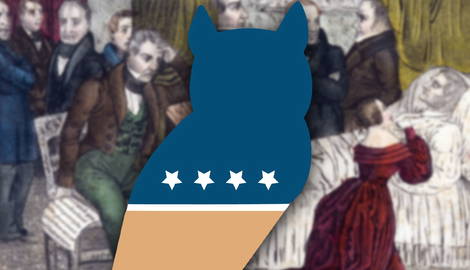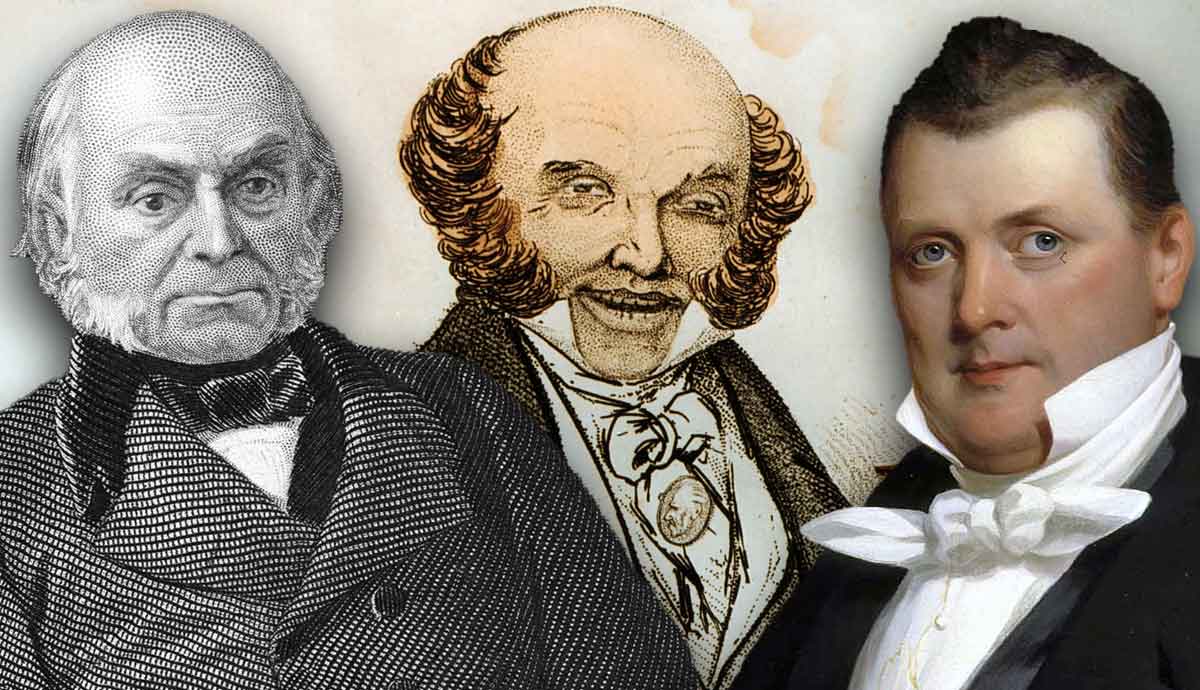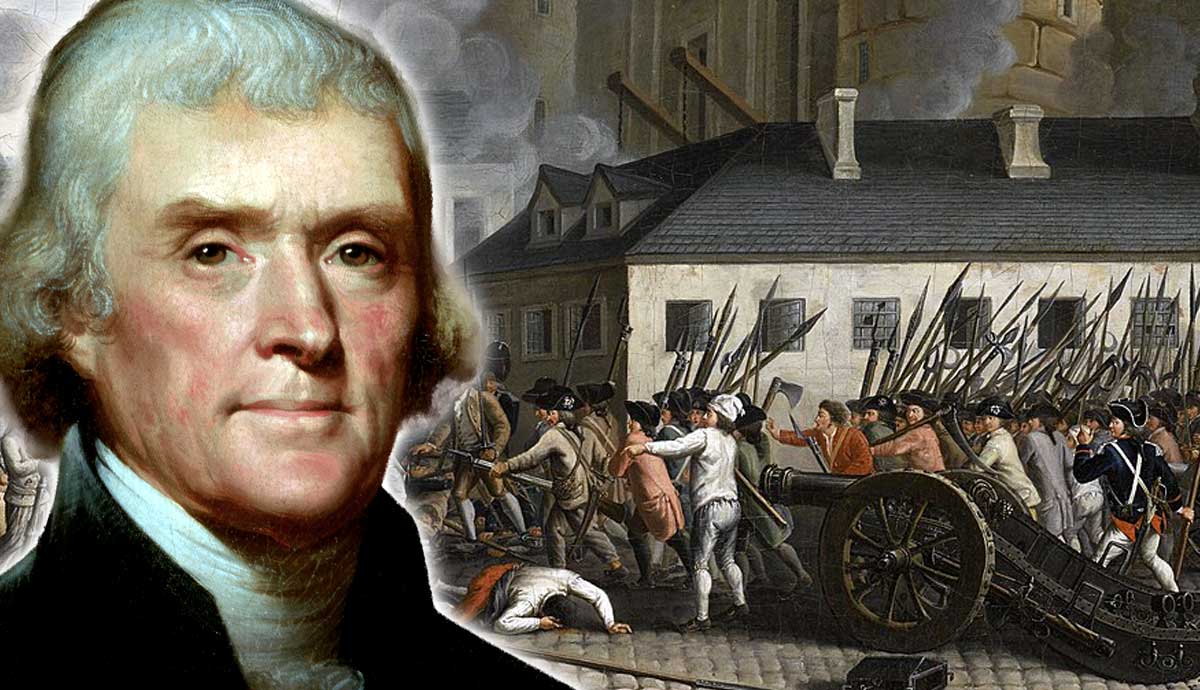
Despite the framers of the US Constitution wanting to avoid political parties, keeping them out of the famous document, American political parties developed swiftly. A two-party system emerged, beginning with the Federalists and the Anti-Federalists, with two major parties typically enjoying a balance of power. In the 1830s, the Whig Party evolved to counterbalance the rise of Jacksonian populism under Democratic President Andrew Jackson.
This new party was a distant descendant of the Federalist Party and sought economic modernization, a national bank, and less executive authority. It clashed with the populist Democratic Party, which wanted a strong executive and westward expansion of the nation. Here’s a look at the Whigs, whose collapse allowed for the rise of the Republican Party.
Setting the Stage: Avoiding Partisanship

When the United States Constitution was written in Philadelphia in the summer of 1787, political parties were left out of the document. At the time, most framers of the Constitution feared political “factions,” as they were then known, as being detrimental to democracy and the stability of a republic. Originally, it was believed that the leaders of the new American republic would be well-educated independent men who would make wise decisions without the effects of partisanship. The original Electoral College, for example, was not controlled by the political parties like it is today.
The first Electoral College unanimously selected George Washington, president of the Constitutional Convention, to be the first President of the United States. Washington did not belong to a political party but saw them begin to form during his time in office. In his famous “Farewell Address” of 1796, Washington cautioned America against the rise of partisanship. Regardless, cabinet secretaries Thomas Jefferson (Secretary of State) and Alexander Hamilton (Secretary of the Treasury) pursued their own partisan goals. Washington died in 1799, still opposed to political parties.
Setting the Stage: The First Political Parties

The precursors to America’s formal political parties were the Federalists and Anti-Federalists, who debated the ratification of the US Constitution. Federalists, led by James Madison, Alexander Hamilton, and John Jay, tried to convince leaders in the thirteen states to ratify the Constitution through their eloquent Federalist Papers. Opposing them were the Anti-Federalists, who felt that the new Constitution gave too much power to the central government and weakened state sovereignty. These beliefs continued during Washington’s tenure and evolved into the first political parties.
The urban-focused Alexander Hamilton led the Federalists, while the agrarian Thomas Jefferson turned the Anti-Federalists into the Democratic Republicans. In 1800, Jefferson won the presidency on his second attempt, defeating John Adams. After this, the Democratic Republicans became the dominant party in Washington, eclipsing the remaining Federalists. By the 1820s, the Democratic Republicans themselves were becoming divided over issues like states’ rights and a national bank (government control of the money supply), resulting in a split between Federalist-like “National Republicans” and traditional “Old Republicans.”
1820s: Rise of Andrew Jackson & Populism

The 1824 presidential election occurred after the collapse of the Federalist Party, resulting in all contenders being Democratic Republicans of various factions. By this time, most states awarded their electors based on the popular vote, making it a rather populist (focus on the commoner) election. The two most popular candidates were Henry Clay, a Kentuckian who was Speaker of the House, and General Andrew Jackson, a War of 1812 hero of the famous Battle of New Orleans. In the end, Jackson emerged as the most popular and even won votes outside his home region.
Despite winning the popular vote, Jackson did not win enough votes in the Electoral College to claim the presidency. With nobody winning a majority in the Electoral College, the election was given to the House of Representatives, where Speaker Henry Clay helped John Quincy Adams win a majority. The loss helped spur intense animosity between Jackson and Clay and fueled Jackson’s desire for a rematch in 1828. Jackson’s 1828 campaign, which was successful, began the rise of the modern Democratic Party out of the splintered Democratic Republican Party.
Early 1830s: Nullification Crisis & National Bank

Andrew Jackson, with the help of master planner (and presidential successor) Martin Van Buren, created the Democratic Party in 1828. Jackson’s coalition of support was massive, with common voters enjoying his tough talk against the alleged special privileges enjoyed by the elites. However, a crisis soon emerged over high tariffs that had been enacted in 1828, before Jackson’s victory. The Tariff of Abominations helped Northern and Western states by protecting them from foreign competition but hurt the South by reducing foreign demand for cotton. This led to the Nullification Crisis in 1833 when South Carolina refused to abide by the tariffs.
A second political crisis emerged at the same time over the national bank, which was titled the Second Bank of the United States. Despite the US Supreme Court having agreed that Congress could create a national bank with which it could conduct monetary policy, Jackson distrusted this power. The Bank War occurred in 1832 when Jackson vetoed Congress’ bill to provide the Second Bank of the United States with a new 15-year charter. Jackson felt the national bank (also known as a central bank) was a tool of the elites to control the economy, and voters agreed. Jackson handily beat Henry Clay in a re-election rematch that autumn.
1833: Henry Clay Founds the Whig Party

Jackson’s tremendous executive authority compared to previous presidents alarmed Clay. Upset with Jackson and his own defeats in presidential elections, Clay created the Whig Party after the election of 1832. Composed of many Northerners in the Federalist vein who wanted a modern, pro-urban economy (known as the American System of government intervention to assist in economic development), the Whigs also attracted Southern opponents of Jackson’s strong executive power during the Nullification Crisis. The Whigs sought to deny Jackson’s chosen successor, Martin Van Buren, a presidential election victory in 1836 but were unsuccessful.
The Whigs learned from their mistakes. In 1836, they had run multiple candidates to try and split the Electoral College vote, denying Van Buren a majority. Three years later, the Whig Party met to create a unified party platform and presidential ticket for the 1840 election, planning to run against Van Buren directly. The 1840 election was noteworthy in being the first to have a ticket actively campaign for office in person; previous elections had featured relatively little campaigning, which was seen as undignified.
1840: William Henry Harrison Wins the Presidency

Whig nominee William Henry Harrison went out on the campaign trail and held massive rallies, which were successful in boosting the Whig’s popularity. Harrison, a fellow War of 1812 officer, styled his 1840 campaign after Andrew Jackson’s own successful forays. The election was a bitter contest, with both sides “going negative” and attacking each other. Ultimately, the Whigs won a sizable Electoral College victory and about 150,000 more popular votes than Van Buren and the Democrats.
Tragically, Harrison died only one month into his presidency, likely due to pneumonia. His vice president, John Tyler, was a former Democrat and thus not strongly liked by the Whigs. He had been added to the ticket with Harrison as a nod to Southern opponents of Jackson, resulting in the famous campaign slogan “Tippecanoe and Tyler Too!” Tippecanoe referred to a famous battle against Native Americans in Indiana, where Harrison fought a fierce engagement against determined Shawnee warriors. Tyler assumed the presidency, and tensions quickly arose between the “accidental” president and Henry Clay, who had founded the Whig Party.
1840s: Whig Party Struggles

Despite initially supporting Whig doctrine, Tyler quickly reverted to a states’ rights activist and vetoed national bank bills passed by Clay. This resulted in Tyler’s expulsion from the Whig Party, putting the party in disarray. In a rarity, the incumbent president was rejected as his party’s nominee for re-election. There was even an attempt in Clay’s House of Representatives to impeach Tyler, but it failed. As the split between Tyler and the Whigs grew, Tyler replaced his Cabinet (most of whom had resigned as loyal Whigs) with Southerners, giving the remaining Whig Party a distinctive Northern, urban flavor.
In 1844, the Whigs nominated Henry Clay as presidential nominee, but he lost to a relatively unknown James K. Polk, who had replaced former president Martin Van Buren as the Democrats’ nominee after many rounds of voting at the party convention. The Whigs opposed the annexation of Texas, which was a hot-button issue at the time, while Polk supported it. Similar to 1840, the 1844 election was heated, bitter, and featured partisan presses publishing slanderous material against the opposing candidate. In the end, Polk won a razor-thin popular vote victory, ending Clay’s presidential ambitions. During Polk’s term, the Mexican-American War was opposed by the Whigs, who lost popularity when the war was a resounding success for the United States.
1849-53: Zachary Taylor & Millard Fillmore

Although the Whigs had opposed the Mexican-American War on the grounds that expanding the country would inevitably lead to an expansion of slavery, the party chose Mexican-American War hero Zachary Taylor as its 1848 presidential nominee. Taylor was sympathetic to the Whigs due to his dislike of former president Jackson, whom he viewed as corrupt, and his dislike of incumbent president Polk over Polk’s wartime leadership. The Whigs accepted Taylor and let him run without a distinct platform, and Taylor won the election of 1848 in an upset.
By 1850, tensions had emerged again between the Whig president and congressional Whigs as Taylor became more aggressive as chief executive, ignoring the Whig goal of stronger legislative and Cabinet powers. However, on July 4, 1850, Taylor came down sick after Independence Day festivities and perished five days later. His vice president, Millard Fillmore, replaced him. Fillmore was a true Whig who replaced Taylor’s departing Cabinet with moderate Whigs. However, Fillmore did accept the Compromise of 1850, which angered some Northern Whigs. To this date, Fillmore remains the last US president who did not belong to either the Democratic or Republican Party.
Mid-1850s: Whig Party Collapses

Millard Fillmore’s support for the Compromise of 1850 prevented him from winning the Whig Party’s nomination again in 1852, making him the second Whig president to be rejected by the party for re-election. After many ballots, the Whig Party finally chose General Winfield Scott, another Mexican-American War hero, as its presidential nominee. Scott was opposed to slavery and spoke about it, weakening his support in the South. Some Southerners switched to the Democratic Party, helping nominee Franklin Pierce win the election of 1852.
During Pierce’s presidency, the passage of the Kansas-Nebraska Act in 1854 finally broke the Whig Party. Southern Whigs felt the need to switch to the Democratic Party in support of slavery, while Northern Whigs felt they could no longer hold back the tide of expansionism across the West. The emergence of two new political parties, the Know-Nothings and the Free-Soilers, drained the Whig Party of supporters in the aftermath of the Kansas-Nebraska Act, as opponents of the Democratic Party no longer had to be Whigs by default. By 1856, the Whig Party barely had enough delegates to hold its final national convention.
Later Evolution: The Republican Party

Many Northern Whigs joined the newly-formed Republican Party—founded in Ripon, Wisconsin in 1854—after the Kansas-Nebraska Act. This new party was vocally opposed to the expansion of slavery and quickly became the de facto primary opponent of the Democratic Party. In the 1856 election, the new Republican party won a majority of the free states, proving itself to be the successor of the Whig Party. Although it was primarily a political party of Northerners and Westerners, it also attracted some anti-slavery Southerners.

Unlike the more moderate Whig Party, the Republican Party quickly came out against slavery in its 1856 convention platform. The Republicans chose John C. Fremont as their presidential nominee, and many Know-Nothings threw their support behind Fremont in the election despite the Know-Nothing Party having chosen former Whig president Millard Fillmore as their nominee. However, Democrat Franklin Buchanan won the 1856 presidential election. Not until 1860, with the nomination of Illinois politician Abraham Lincoln, did the Republicans come into their own. Only weeks after Lincoln’s presidential inauguration in 1861, the American Civil War began with the Confederate attack on Fort Sumter.










